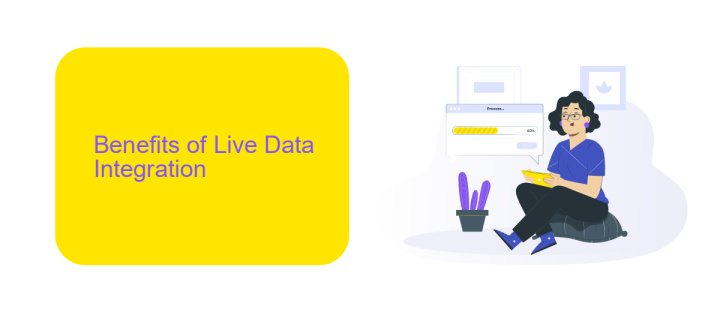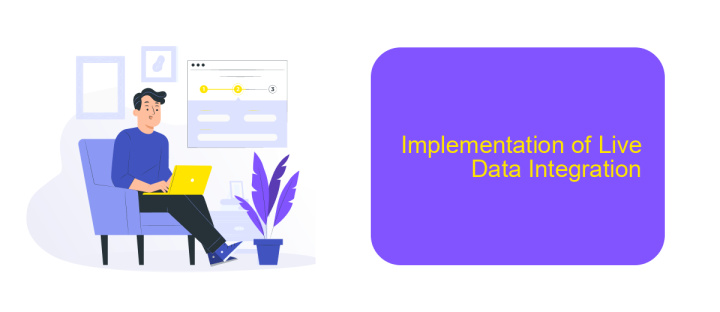Live Data Integration
Live data integration is a transformative approach that enables real-time data access and processing from multiple sources, ensuring timely and accurate information flow across an organization. By seamlessly connecting disparate systems, it enhances decision-making, improves operational efficiency, and supports dynamic business needs. This article explores the key benefits, challenges, and best practices for implementing live data integration in modern enterprises.
Introduction to Live Data Integration
Live Data Integration is a crucial aspect of modern data management, enabling real-time data exchange between various systems and applications. This integration ensures that data is always up-to-date, which is essential for making informed decisions and maintaining operational efficiency.
- Real-time data synchronization between systems
- Enhanced decision-making capabilities
- Improved operational efficiency
- Reduced data redundancy and errors
- Seamless integration with existing workflows
One effective tool for setting up live data integrations is ApiX-Drive. It offers a user-friendly interface and a wide range of connectors to integrate different applications without the need for coding. By utilizing ApiX-Drive, businesses can automate data flows and ensure that their systems are always synchronized, thereby enhancing productivity and reducing the risk of data inconsistencies.
Benefits of Live Data Integration

Live data integration offers numerous benefits, transforming how businesses operate and make decisions. One of the primary advantages is real-time data access, which ensures that organizations can react promptly to changes and opportunities. This immediacy enhances decision-making processes, enabling more accurate and timely responses to market trends, customer behaviors, and operational issues. Additionally, live data integration eliminates data silos, fostering a more cohesive and collaborative environment across departments.
Another significant benefit is the automation of data workflows, reducing the need for manual data entry and minimizing errors. Services like ApiX-Drive facilitate seamless integration between various platforms, making it easier to set up and manage these connections without extensive technical expertise. This not only saves time but also allows businesses to focus on strategic tasks rather than mundane data management. Moreover, the ability to integrate live data from multiple sources provides a comprehensive view of business operations, leading to more insightful analytics and better overall performance.
Considerations for Live Data Integration

When considering live data integration, it's essential to address several key factors to ensure seamless and efficient data flow. Live data integration allows organizations to synchronize data in real-time, which can significantly enhance decision-making processes and operational efficiency.
- Data Source Compatibility: Ensure that the data sources you intend to integrate are compatible and can communicate effectively with each other.
- Data Security: Implement robust security measures to protect sensitive information during data transfer and storage.
- Scalability: Choose integration solutions that can scale with your business needs and handle increasing volumes of data.
- Latency: Minimize latency to ensure real-time data availability and responsiveness.
- Service Reliability: Opt for reliable integration services like ApiX-Drive, which offer automated workflows and real-time data synchronization.
By carefully considering these factors, organizations can successfully implement live data integration, leading to more accurate insights and improved operational efficiency. Leveraging tools like ApiX-Drive can simplify the integration process, ensuring that data flows smoothly and securely across various platforms.
Implementation of Live Data Integration

Implementing live data integration involves several critical steps to ensure real-time data flow between systems. The first step is to identify the data sources and destinations, which can include databases, APIs, and third-party applications. Understanding the data structure and the required transformations is essential for seamless integration.
Next, choose the appropriate tools and platforms to facilitate the integration. ApiX-Drive is a powerful service that simplifies the process by providing pre-built connectors and automation features. It supports a wide range of applications and allows for easy configuration without the need for extensive coding knowledge.
- Identify data sources and destinations
- Understand data structure and transformations
- Select integration tools and platforms
- Configure connectors and automation
After setting up the integration, continuous monitoring and maintenance are crucial to ensure data consistency and reliability. Regular updates and troubleshooting help to address any issues promptly, ensuring that the live data integration remains efficient and effective.
Case Studies and Best Practices
One notable case study involves a retail company that successfully implemented live data integration to streamline their inventory management. By integrating their sales system with their inventory database in real-time, they were able to maintain accurate stock levels, reduce overstock and stockouts, and improve customer satisfaction. The use of ApiX-Drive facilitated this process by providing seamless data transfer between disparate systems, ensuring that the data was always up-to-date and reliable.
Another best practice example comes from a financial services firm that leveraged live data integration to enhance their customer relationship management (CRM). By integrating live customer data from various touchpoints, including social media, email, and in-person interactions, the firm was able to gain a comprehensive view of their clients. This holistic approach allowed for more personalized and timely communication, ultimately leading to increased client retention and satisfaction. ApiX-Drive played a crucial role by enabling smooth and efficient data flows between the CRM and other data sources.
FAQ
What is Live Data Integration?
Why is Live Data Integration important for businesses?
Can I integrate multiple data sources in real-time?
How difficult is it to set up Live Data Integration?
What are some common challenges in Live Data Integration?
Apix-Drive will help optimize business processes, save you from a lot of routine tasks and unnecessary costs for automation, attracting additional specialists. Try setting up a free test connection with ApiX-Drive and see for yourself. Now you have to think about where to invest the freed time and money!

